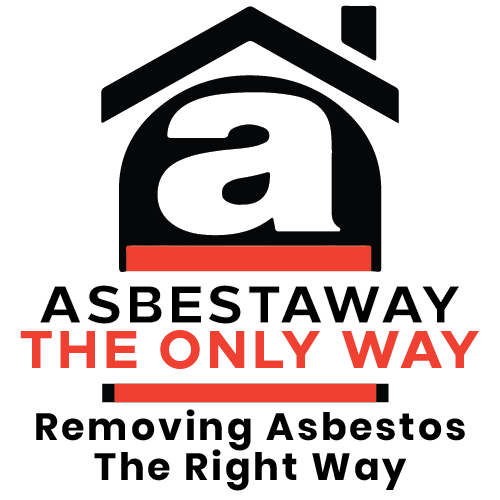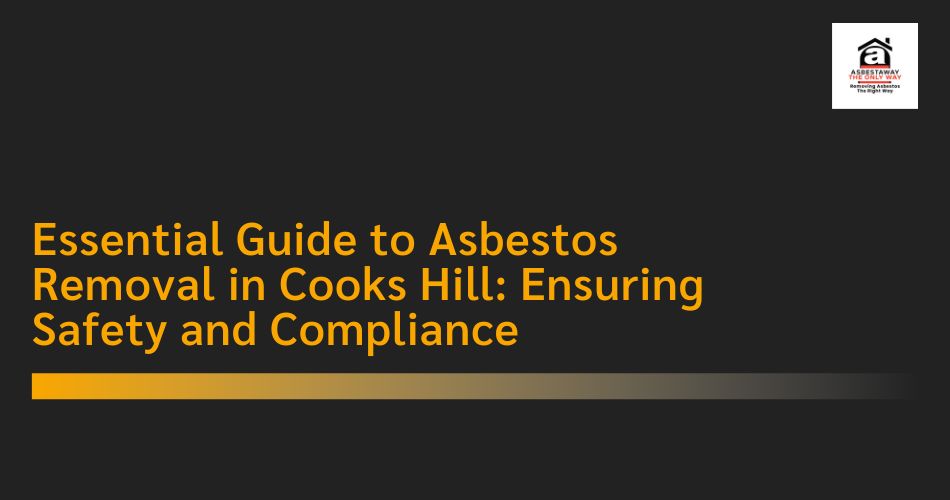Asbestos is a naturally occurring mineral that was widely used in construction materials in Australia until the late 20th century. Its heat-resistant properties made it ideal for insulation, roofing, and flooring. However, exposure to asbestos fibers can be hazardous, leading to serious health issues like asbestosis, lung cancer, and mesothelioma. In Cooks Hill, as in many parts of Australia, asbestos removal is not just a matter of convenience, but one of safety and compliance with legal regulations.
This guide will provide you with an in-depth understanding of asbestos removal, from identifying asbestos-containing materials (ACMs) to safely managing its removal and disposal. We’ll also touch on local regulations and the important role professional asbestos removal services, such as Asbestaway, play in ensuring a safe environment for residents and workers.
Understanding Asbestos and Its Risks
Asbestos is made up of microscopic fibers that are resistant to heat, fire, and chemical damage. Historically, it was used in a variety of materials, including:
- Roofing: Asbestos cement sheets were commonly used for roofing due to their durability.
- Insulation: Asbestos was used in insulation products such as pipe insulation, spray-on insulation, and electrical panel insulation.
- Flooring: Vinyl flooring, often referred to as asbestos vinyl tiles, was commonly used in homes and commercial buildings.
- Ceiling Tiles: Some ceiling tiles contain asbestos for fireproofing and insulation purposes.
Health Risks
When asbestos-containing materials are disturbed, the fibers become airborne, posing serious health risks if inhaled. The long-term effects of asbestos exposure are significant, with diseases such as:
- Asbestosis: A chronic lung disease caused by the inhalation of asbestos fibers.
- Lung Cancer: Exposure to asbestos significantly increases the risk of lung cancer.
- Mesothelioma: A rare but aggressive cancer that affects the lining of the lungs, abdomen, or heart.
Because asbestos exposure often occurs over long periods, individuals who live in older homes or work in older buildings are at higher risk. Cooks Hill, like many urban areas with older buildings, may have a history of asbestos use, making proper removal crucial for health and safety.
Identifying Asbestos in Your Property
The first step in ensuring safety is identifying whether your property contains asbestos. Asbestos is often found in buildings constructed before 1980. To identify asbestos:
- Check the age of your home: Homes built before 1980 are more likely to contain asbestos. However, it’s essential to note that asbestos was still used in some products well into the 1990s.
- Look for common asbestos-containing materials: These include roof sheeting, floor tiles, insulation, and wall cladding. Some of these materials may still appear in good condition, making them harder to identify.
- Professional testing: If you suspect that asbestos may be present in your property, it is important to have a professional asbestos testing service conduct an inspection. This typically involves taking samples from suspect materials and having them analyzed in a laboratory.
- Do not disturb: If you suspect asbestos but are unsure, do not disturb the materials. Asbestos fibers are most dangerous when disturbed and inhaled.
The Process of Asbestos Removal
Asbestos removal is a highly regulated and hazardous process. Only licensed professionals should perform asbestos removal to avoid exposure to harmful fibers. Below is an overview of the process:
1. Initial Assessment and Risk Evaluation
Before beginning the removal process, a licensed asbestos assessor conducts a thorough inspection of your property. This evaluation includes:
- Identifying the presence of asbestos-containing materials.
- Assessing the condition of these materials: If the asbestos is in good condition and undisturbed, it may not need removal, but should still be monitored.
- Determining the risks: This assessment considers factors such as the potential for exposure, the extent of contamination, and the type of materials involved.
2. Asbestos Removal Plan
Once asbestos is identified, a detailed removal plan must be developed. This plan outlines:
- The methods and equipment to be used.
- The safety precautions to be implemented.
- A timeline for the removal process.
The removal plan also ensures that the work is in compliance with local laws and safety standards.
3. Asbestos Removal and Disposal
Asbestos removal is a meticulous and controlled process. Here are the main steps involved:
- Preparation: The area around the asbestos material is sealed off using plastic sheeting to prevent the spread of fibers. Warning signs are placed to alert anyone in the vicinity of the danger.
- Containment: The asbestos materials are carefully removed using specialized equipment such as HEPA vacuums and wetting agents to reduce the risk of airborne fibers.
- Transportation and Disposal: The asbestos is securely sealed in approved containers and transported to a licensed waste disposal facility, where it is safely disposed of according to local environmental regulations.
4. Clearance Inspection
After removal, a clearance inspection ensures that the area is safe for occupancy. This includes:
- Air quality testing to ensure that no harmful asbestos fibers remain in the air.
- Visual inspection to check that no asbestos remnants have been left behind.
If the inspection passes, the area is considered safe for use.
Legal and Regulatory Compliance
In Australia, asbestos removal is strictly regulated by government agencies to ensure safety. Below are the key regulations:
- Work Health and Safety Regulations (WHS): These regulations require employers to ensure that work environments are free from asbestos exposure. This includes regular assessments, the use of personal protective equipment (PPE), and proper training for workers.
- Safe Work Australia: Safe Work Australia provides guidelines on how to manage asbestos in the workplace and in residential areas. These guidelines help businesses and homeowners navigate the complexities of asbestos removal.
- Asbestos Removal Licenses: Any company or individual involved in asbestos removal must be licensed. There are different types of licenses depending on the scope of the removal (Class A or Class B), with Class A being required for the removal of friable asbestos (easily crumbled) and Class B for non-friable asbestos.
- Asbestos Waste Disposal: Proper disposal of asbestos is regulated by the Environment Protection Authority (EPA) in each state. In New South Wales (where Cooks Hill is located), the EPA mandates that asbestos waste must be disposed of at designated facilities that have the capability to safely manage hazardous waste.
Asbestos Removal in Cooks Hill
Cooks Hill, a historic suburb in Newcastle, New South Wales, is home to many heritage properties that may contain asbestos. Asbestos removal in Cooks Hill must be carried out with particular care to preserve the integrity of these older buildings while ensuring the safety of their occupants.
Local Considerations
- Cultural and Heritage Sites: Many buildings in Cooks Hill are of cultural and historical significance. Asbestos removal must be conducted in a way that minimizes damage to the structure while adhering to preservation guidelines set by local authorities.
- Proximity to Schools and Public Spaces: With many schools, businesses, and homes in Cooks Hill, ensuring that asbestos removal is done safely and responsibly is essential to public health.
- Regulations in Cooks Hill: Local councils, in conjunction with the NSW government, enforce stringent rules on asbestos removal. The compliance with these laws ensures that the health of residents and workers is protected.
Choosing the Right Asbestos Removal Company in Cooks Hill
Selecting a licensed and experienced asbestos removal company is critical to ensuring a safe and efficient removal process. Here’s what to look for when choosing a contractor:
- Licensing and Certification: Ensure that the company holds the appropriate licenses for asbestos removal.
- Experience: Choose a company with experience in residential and commercial asbestos removal, particularly in older areas like Cooks Hill.
- Insurance: A reputable company will have insurance that covers asbestos-related accidents.
- Reputation: Check for customer reviews, references, and any past complaints with the company to ensure they have a solid track record.
Asbestaway: Your Trusted Asbestos Removal Partner
When it comes to asbestos removal in Cooks Hill, Asbestaway stands out as a trusted name in the industry. Asbestos removal is a delicate and dangerous job, and Asbestaway ensures that all projects are carried out with the utmost care and professionalism.
Why Choose Asbestaway?
- Licensed and Experienced: Asbestaway’s team of professionals is fully licensed and experienced in handling both friable and non-friable asbestos removal.
- Safety First: Asbestaway places the highest priority on the safety of both their workers and clients. Their team follows strict safety protocols and uses advanced equipment to ensure a safe working environment.
- Compliance with Regulations: Asbestaway is fully compliant with all local and national regulations regarding asbestos removal, disposal, and workplace safety.
- Efficient and Affordable: Asbestaway works with clients to ensure timely completion of projects, while also offering competitive pricing for their services.
- Clearance and Certification: After completing the asbestos removal process, Asbestaway provides a comprehensive clearance certificate, ensuring that the area is safe for reoccupation.
Whether you are dealing with a small residential project or a larger commercial site, Asbestaway can provide expert advice and service to ensure your asbestos removal needs are met safely and legally.
Conclusion
Asbestos removal is a critical process in protecting the health and safety of residents and workers in Cooks Hill. With the proper identification, safe removal practices, and compliance with regulations, you can ensure that your property remains free from the dangers of asbestos.
For the residents of Cooks Hill, partnering with a licensed and reputable asbestos removal service like Asbestaway is crucial to ensuring a smooth, safe, and compliant removal process. By following the guidelines outlined in this guide, you can make informed decisions and contribute to a healthier environment for all.

